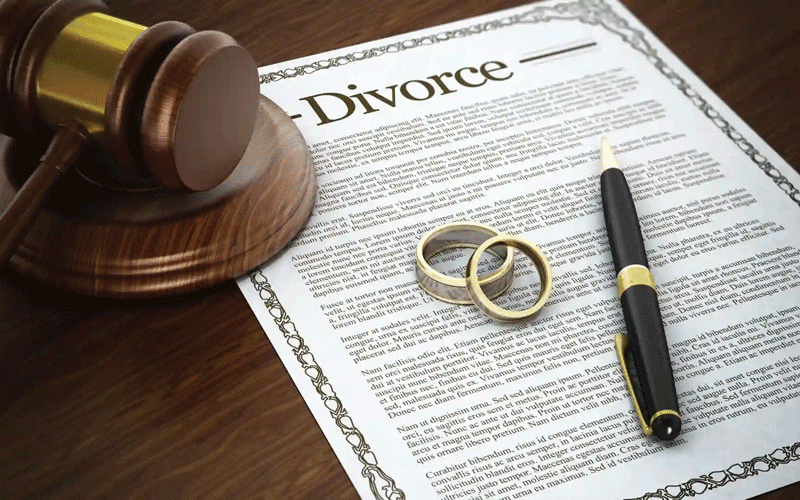
ZIMBABWE is witnessing a worrying spike in divorce cases, with 3 214 filings recorded nationwide in 2024, up from 2 149 in 2023.
The sharp rise has raised alarm within the judiciary, particularly at the High Court, which handles divorce decrees for marriages solemnised under general law.
Harare accounted for the largest share, with 1 945 couples seeking to end their unions, followed by Bulawayo with 825.
Available data indicates that infidelity, communication breakdown and gender-based violence remain the leading causes. An emerging trend is the rising number of women initiating divorce.
These figures make it increasingly important to understand how marriages are legally dissolved, especially given the emotional and financial strain separation places on children and the family unit, an institution the state is constitutionally obliged to protect under Section 25.
The section states: “The State and all institutions and agencies of government at every level must protect and foster the institution of the family and in particular must endeavor, within the limits of its resources available to them …”
Because marriage has profound implications for society, the state understandably regulates how unions are formed, maintained and, when necessary, dissolved.
Marriage is, therefore, more than a private contract between two individuals; it is a social institution in which the state has a vested interest.
- Fresh land invasions hit Whitecliff
- Pomona cash row escalates
- Border Timbers targets European markets
- SA name strong A side for Zim tour
Keep Reading
This is why divorce proceedings fall under the Matrimonial Causes Act (Chapter 5:13), which applies even to marriages solemnised under the Customary Marriages Act (Chapter 5:07).
Grounds for divorce in Zimbabwe
Under Section 4 of the Act, there are only two recognised grounds on which a marriage may be dissolved:
l Irretrievable breakdown of the marriage, meaning there is no reasonable prospect of restoring a normal marital relationship; and
l Incurable mental illness or continuous unconsciousness of one spouse.
Even where irretrievable breakdown appears to have been proven, courts retain discretion. A magistrate or High Court judge may refuse to grant a decree if doing so would cause grave hardship to a spouse or to the children.
As legal scholar Welshman Ncube notes in Family Law, the phrase: “A marriage may be dissolved …” gives the courts room to withhold a divorce where the consequences would be severely harmful.
Irretrievable breakdown essentially means the emotional and practical bonds holding the marriage together have collapsed.
What once acted as the “glue” of the relationship has expired, leaving the union as an empty shell.
Factors for irretrievable breakdown
Several factors commonly lead to this point. Prolonged conflict often escalates into cruelty as affection erodes.
Lack of communication, Zimbabwe’s second most frequently-cited reason for divorce, can result in emotional disconnection.
While emotional distance does not necessarily cause adultery, it can create an environment in which infidelity takes root.
Significant changes in life circumstances may also strain a marriage. For instance, a spouse who entered the union primarily for financial stability may abandon the marriage after the other partner loses a job or source of income.
Ultimately, the essence of this ground is that the couple believes the marriage cannot be repaired and that continuing the relationship would be futile, yielding more harm than harmony.
Proving irretrievable breakdown
Sections 4 and 5 of the Matrimonial Causes Act outline what must be demonstrated when a spouse files for divorce on this ground.
Crucially, the Act does not require proof of fault. Even a spouse who committed adultery may file for divorce. The focus is on the viability of the marriage, not on punishing wrongdoing.
If the court believes there is still a reasonable prospect of reconciliation, it may postpone the matter to give the couple an opportunity to mend their relationship.
Contested divorce
Where a divorce is contested, meaning the respondent denies that the marriage is beyond repair, the spouse seeking dissolution must present evidence. This may include:
l Period of separation: If the couple has not lived together as husband and wife for at least 12 continuous months before filing, this may serve as evidence of breakdown. However, living apart alone is insufficient; many couples live separately due to work yet maintain marital ties through communication and support; and
l Documentation of conflict: Records of persistent disputes, prolonged lack of intimacy, and failure to communicate can demonstrate that the marriage has collapsed. Such evidence may include text messages, emails, witness testimony, or proof of failed reconciliation attempts.
Conclusion
The rising divorce rates in Zimbabwe highlight both the evolving dynamics of modern relationships and the complexity of legally dissolving a marriage. Understanding the concept of irretrievable breakdown and the legal framework surrounding it is essential, not only for couples, but for society as a whole.
The state’s involvement reflects its broader responsibility to safeguard the family and protect the emotional and financial well-being of all affected, particularly children.
As divorce becomes more common, there is a pressing need to address the root causes of marital strain and to promote environments where healthy, resilient relationships can thrive.
- Mhlanga is a law student at the University of Zimbabwe











